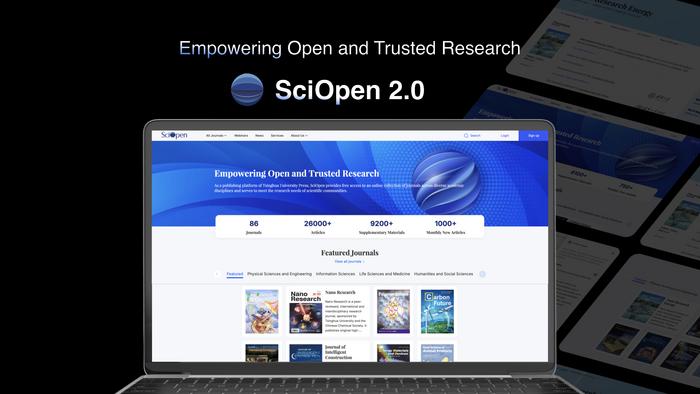On June 30, 2024, SciOpen 2.0 was officially launched. Developed by Tsinghua University Press, SciOpen initially made its debut in June 2022 as an international digital publishing platform for STM journals. After two years of global operation and continuous iterative upgrades, SciOpen 2.0 has fully embraced the best practices of mainstream publishing models. SciOpen has completed a comprehensive upgrade of its interactive system design and has integrated advanced large-model AI reading capabilities, marking a significant leap forward in its functionality.

Credit: Tsinghua University Press
On June 30, 2024, SciOpen 2.0 was officially launched. Developed by Tsinghua University Press, SciOpen initially made its debut in June 2022 as an international digital publishing platform for STM journals. After two years of global operation and continuous iterative upgrades, SciOpen 2.0 has fully embraced the best practices of mainstream publishing models. SciOpen has completed a comprehensive upgrade of its interactive system design and has integrated advanced large-model AI reading capabilities, marking a significant leap forward in its functionality.
These updates steer SciOpen towards a more professional, modern, and intelligent direction, further enhancing its support for the establishment and development of STM journals and empowering open and trusted research. Up to now, SciOpen has released more than 80 English-language journals with an archive exceeding 26,000 articles, and garners approximately 38,000 daily visits from a global readership spanning over 180 countries and regions.
Zong Junfeng, Chairman of Tsinghua University Press, expressed that under the general trend of global open science, SciOpen will provide full-process digital publication and dissemination services for universities, institutes, societies, and editorial offices to develop world-class STM journals. It is committed to building international infrastructure for open science, promoting the construction of an open innovation ecosystem, and playing an active role in serving global scientific and technological innovation.



